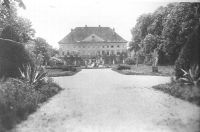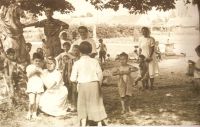+386 2 754 02 00

Institute History
Institute for Education, Work and Care dr. Marijan Borštnar Dornava - abbreviated name ZUDV DORNAVA, is a social welfare institution for training. It was established in 1 October 1953 by the decision of the then Minister of the Republic of Slovenia. It was named "Home for the mentally defective youth in Dornava near Ptuj."
Fifteen days after the establishment, the large and heavy door of the old castle in Dornava opened. Through them 67 "unusual lords of the castle" entered. They came from the Hrastovec Institute. They were from different parts of Slovenia. They were referred to the Dornava Institute in order to live there and be trained there.
Thus began the life and work at the Institute. The employees did not know the children yet, they referred to them as "mentally defective", but they knew that they needed love and more help than others.
The positive attitude of the management of the Institute towards the children who needed help, and vigilance of workers, which was imbued with the then ideology that the society is obliged to help and care for those who can not take care of themselves, was enough to start a humane mission.
The spatial conditions in the baroque manor of the Dornava mansion were not suitable for the development of comprehensive care for the needs of persons with moderate, severe and profound intellectual disabilities. They hardly provided basic hygienic conditions.
 |
 |
| Dornava Manor: First home | In the courtyard during the 60s |
Staff at the Institute were aware of this at that time and planned to build new premises of the Institute. However, the economic reform at the beginning of 60s in the former Yugoslavia prevented this plan.
During this period, the life of prof. dr. Marijan Borštnar, the first director of the Institute, tragically ended. In 1967, the Institute was named after him.
 |
| The first director of the Institute |
The number of users of the Institute was constantly increasing. The number of employees also increased, however, the increase was disproportionate in relation to the increase in the number of users. At the end of the eighties, the Institute accommodated 320 users; all were in the institutional care and lived in a total of 2,200 m2 of residential area.
Overcrowded premises of the Institute was the main inhibiting factor for the development of necessary programs to the needs of users. The then State, before falling apart, had nevertheless enough power to build new premises in Dornava that accomodated 180 children and adolescents who were moved from the mansion in the fall of 1990.
This enabled new development opportunities for children and youth, as well as better working conditions for the personnel. 140 adult users over the age of 18 years stayed at the Dornava manor. Their return to hometown was not possible. Approximately one third of them was incorporated into the Occupational Activity Centre, which already operated at the Institute, while the rest were included in the so-called institutional treatment of adults - all still in poor spatial and program conditions.
At the end of the nineties, preparations for moving adult users from the Dornava mansion began. Residents were moved in 2002; 110 of them were moved to the newly built premises in Dornava; while 30 obtained housing units in Ptuj and Dornava.
Thus ended almost half a century of the Institute history, which was marked with asylum life and the constant desire for movement from these conditions.
© 2010 - 2015, Institute for Education, Work and Care dr. Marijan Borštnar Dornava
All rights reserved.
All rights reserved.